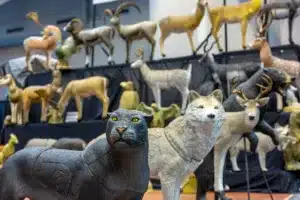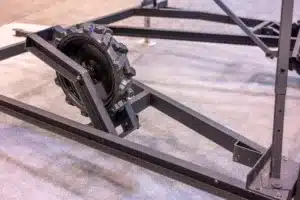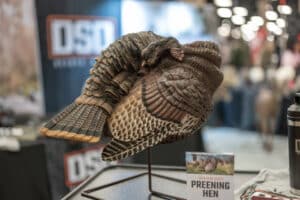No products in the cart.

365 Archery 3D Archery Targets
When folks enter a new industry, or even a new subsection of their industry, they usually dip their toe in by offering one or two

Operating cameras from a treestand presents its own set of challenges for those attempting to be SELFILMED. The primary objective is obviously to get off a lethal shot, however there are also additional things to think about in the moment of truth when running camera gear. The following tactics and techniques can be used to improve your efficiency and effectiveness of capturing a memorable SELFILMED hunt.
Purchasing multiple cameras is probably the easiest tactic and will immediately improve your ability to capture the shot on film and capture all the other action as it happens. The days are long gone when a hunter had to spend $1000+ dollars to acquire a video camera that would produce quality footage in the outdoors. Just a few short years ago High Definition was only something the wealthy could afford to view on television, much less an average hunter affording the cost of a High Definition recording device. Now HD cameras come in super compact, portable, and affordable packages that can fit anyone’s level of knowledge and price range. With the addition of these compact HD “point of view”, or POV cameras, self-filming has never been easier and more affordable. There are many makes and models of wearable HD POV cameras that can be had for less than $300. Epic, Contour, Wildgame Innovations, and GoPro are just some of the manufacturers making HD POV cameras. POV cameras offer a relatively cheap way to film two secondary camera angles along with a primary camera angle all for under $1000. Having 3 camera angles will take a lot of pressure off of your shoulders when the action gets hot by creating a fail-safe.




The live action angle or “stand cam” is a secondary angle only recording YOU throughout the duration of the hunt. This is another angle POV cameras excel at. Having a wide-angle camera mounted to your stand and pointed up at you allows you to record yourself as well as you capturing footage with your primary camera showing that you are indeed SELFILMED. More importantly it will capture the shot in real-time without having to go back after the fact and recreate the shot for “b-roll” purposes. 


Identifying your stand location and how the animals will be filtering into your hide can better prepare you to capture the animal and shot on the primary camera. If you are hunting a funnel or pinch point where animals will be traveling through then keep your camera positioned toward the most likely shot opportunity. Sometimes things happen fast and keeping the primary camera pointed to your shooting location may be the difference between capturing the shot on the primary camera or missing it. When the animal is detected in plenty of time take some pre-roll recording before the shot, however being prepared for a sprint into action should always be the plan. If you are hunting over a destination like a foodplot, feeder, or waterhole keep the primary camera pointed at the destination for the same reasons. We are often surprised by the arrival of animals and having the angle where they are most likely to end up may make all the difference.
Being SELFILMED isn’t the easiest of task, however there is no other form of filming hunts that are more rewarding. Acquire two POV cameras in addition to your primary camera to assist you in capturing the kill shot and live action on your next treestand hunt. Having the fail-safe “head cam” and capturing all the real-time actions will make your next SELFILMED hunt that much easier to capture. Most importantly, take pride in being SELFILMED and don’t forget to share your hunt with your friends!

When folks enter a new industry, or even a new subsection of their industry, they usually dip their toe in by offering one or two

Highlights of Greylight’s new releases for 2024 – the Daybreak Blind, Transformer Tower, and Nomad trailer.

With one of their coolest decoys to date, the NWTF floor was buzzing with talk of the new DSD Preening Hen decoy. It’s almost TOO
Don’t miss a thing! Subscribe below to keep informed on everything that’s happening with the folks at SELFILMED.com